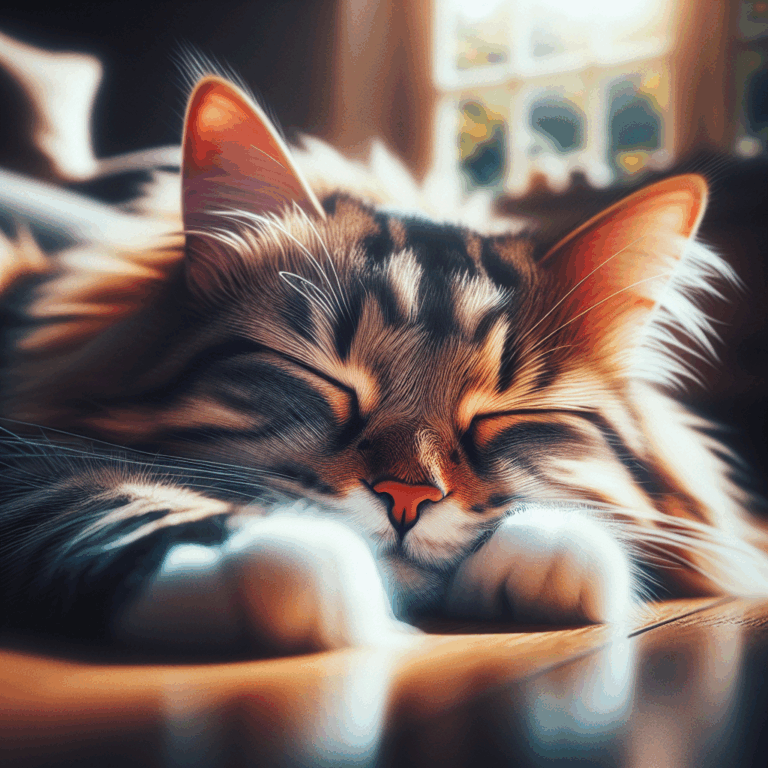The Art of Cat Napping: Why Our Feline Friends Are Masters of Rest
- No Comments
In the bustling world we live in, where the hustle and bustle of daily life often leave us longing for rest, one creature seems to have perfected the art of relaxation—our beloved cats. These enigmatic creatures, with their graceful movements and often aloof demeanor, have captivated humans for centuries. While much has been said about their hunting prowess or their playful antics, one aspect of feline life deserves a closer look: their unparalleled ability to nap.
Cats are renowned for their impressive sleep schedules, which can often total up to 16 hours a day. But what exactly is behind this penchant for prolonged periods of rest? Scientists suggest that this behavior is rooted deeply in their evolutionary history. As obligate carnivores, cats in the wild must expend considerable energy hunting prey. The need for energy conservation between hunts has led to their natural inclination towards extended rest periods. Thus, domestic cats have retained this trait, napping frequently to conserve energy for those spontaneous bursts of activity we so often observe.
But there’s more to cat napping than meets the eye. While it may seem like they are simply in a state of deep sleep, cats are actually masters of different sleep phases, easily transitioning from light dozes to deeper sleep cycles. This ability allows them to remain alert to their surroundings even while resting, a skill honed from their wild ancestors who needed to be vigilant against potential threats.
One of the most fascinating aspects of cat napping is their ability to fall into REM (Rapid Eye Movement) sleep. During this phase, cats are believed to dream, much like humans do. Observant pet owners may notice their feline companions twitching their paws or whiskers, or even emitting soft sounds, as they chase imaginary prey or relive the day’s adventures in their dreams.
The benefits of napping extend beyond simply conserving energy. Studies have shown that regular rest periods are crucial for a cat’s mental and physical health. Just like humans, cats need to process information and experiences, and sleep plays a critical role in this cognitive function. Adequate rest also supports their immune system, helping to ward off illnesses and maintain overall well-being.
For cat owners, understanding and respecting their pet’s need for sleep can enhance the human-feline bond. Providing a comfortable and safe environment for napping is essential. Cats often seek out warm, quiet spots, sometimes hidden away from the hustle of household activity. Encouraging this behavior by creating cozy napping areas can not only improve a cat’s quality of life but also foster a deeper connection with their human companions.
In a world that often glorifies constant activity and productivity, cats remind us of the importance of rest and relaxation. Their ability to effortlessly slip into a peaceful slumber, regardless of the chaos around them, is something humans can aspire to. By observing and learning from our feline friends, we might just find ourselves embracing the art of napping with newfound appreciation, allowing us to recharge and tackle life’s challenges with renewed vigor.
As we continue to explore the myriad wonders of the feline world, it becomes clear that cats have much to teach us. Their mastery of rest is just one of the many lessons they offer, prompting us to pause, unwind, and perhaps, take a cue from them to indulge in a little more shut-eye ourselves.

In the bustling world we live in, where the hustle and bustle of daily life often leave us longing for rest, one creature seems to have perfected the art of relaxation—our beloved cats. These enigmatic creatures, with their graceful movements and often aloof demeanor, have captivated humans for centuries. While much has been said about their hunting prowess or their playful antics, one aspect of feline life deserves a closer look: their unparalleled ability to nap.
Cats are renowned for their impressive sleep schedules, which can often total up to 16 hours a day. But what exactly is behind this penchant for prolonged periods of rest? Scientists suggest that this behavior is rooted deeply in their evolutionary history. As obligate carnivores, cats in the wild must expend considerable energy hunting prey. The need for energy conservation between hunts has led to their natural inclination towards extended rest periods. Thus, domestic cats have retained this trait, napping frequently to conserve energy for those spontaneous bursts of activity we so often observe.
But there’s more to cat napping than meets the eye. While it may seem like they are simply in a state of deep sleep, cats are actually masters of different sleep phases, easily transitioning from light dozes to deeper sleep cycles. This ability allows them to remain alert to their surroundings even while resting, a skill honed from their wild ancestors who needed to be vigilant against potential threats.
One of the most fascinating aspects of cat napping is their ability to fall into REM (Rapid Eye Movement) sleep. During this phase, cats are believed to dream, much like humans do. Observant pet owners may notice their feline companions twitching their paws or whiskers, or even emitting soft sounds, as they chase imaginary prey or relive the day’s adventures in their dreams.
The benefits of napping extend beyond simply conserving energy. Studies have shown that regular rest periods are crucial for a cat’s mental and physical health. Just like humans, cats need to process information and experiences, and sleep plays a critical role in this cognitive function. Adequate rest also supports their immune system, helping to ward off illnesses and maintain overall well-being.
For cat owners, understanding and respecting their pet’s need for sleep can enhance the human-feline bond. Providing a comfortable and safe environment for napping is essential. Cats often seek out warm, quiet spots, sometimes hidden away from the hustle of household activity. Encouraging this behavior by creating cozy napping areas can not only improve a cat’s quality of life but also foster a deeper connection with their human companions.
In a world that often glorifies constant activity and productivity, cats remind us of the importance of rest and relaxation. Their ability to effortlessly slip into a peaceful slumber, regardless of the chaos around them, is something humans can aspire to. By observing and learning from our feline friends, we might just find ourselves embracing the art of napping with newfound appreciation, allowing us to recharge and tackle life’s challenges with renewed vigor.
As we continue to explore the myriad wonders of the feline world, it becomes clear that cats have much to teach us. Their mastery of rest is just one of the many lessons they offer, prompting us to pause, unwind, and perhaps, take a cue from them to indulge in a little more shut-eye ourselves.


